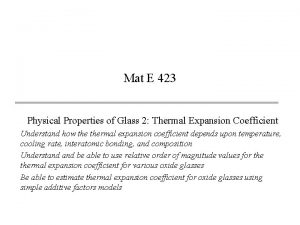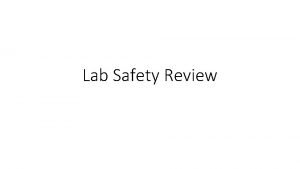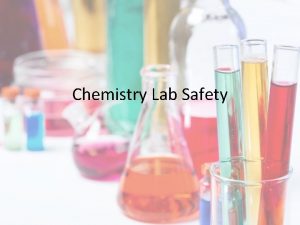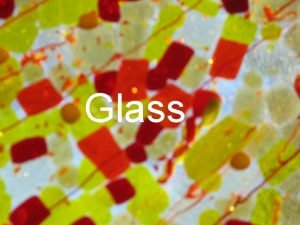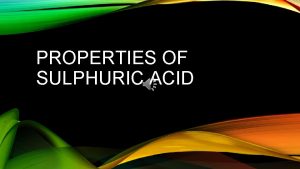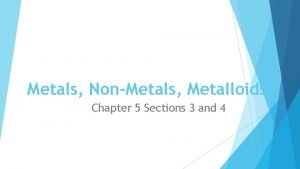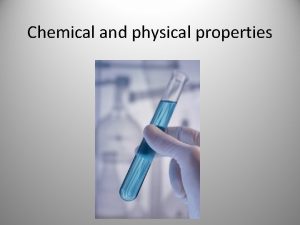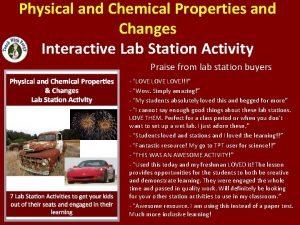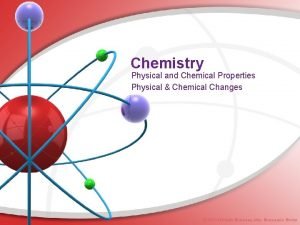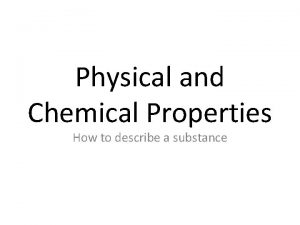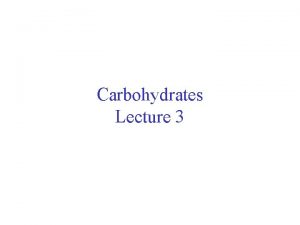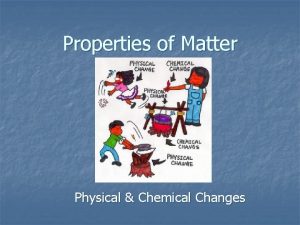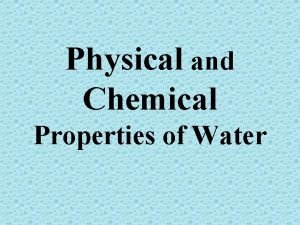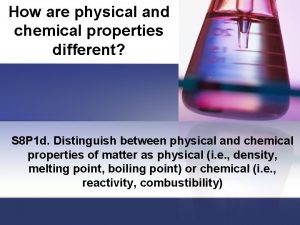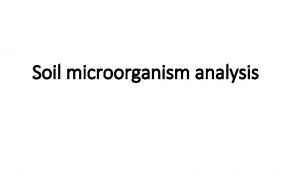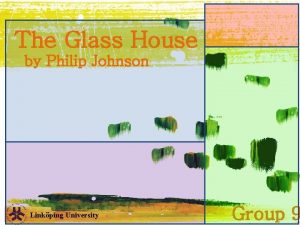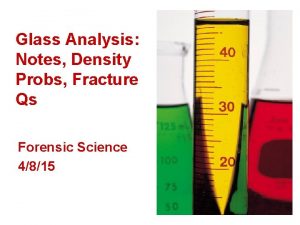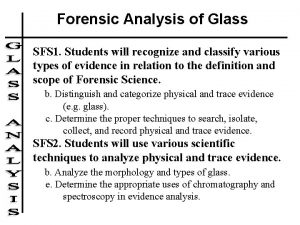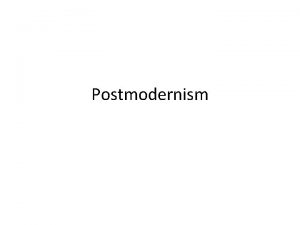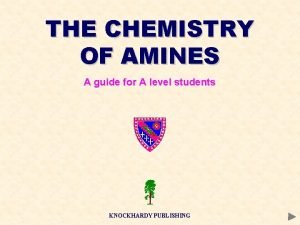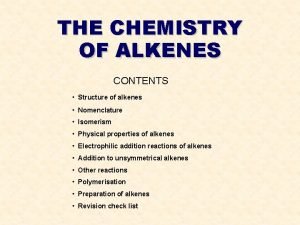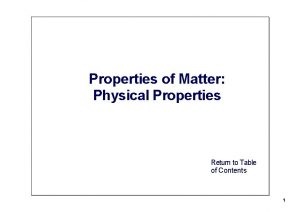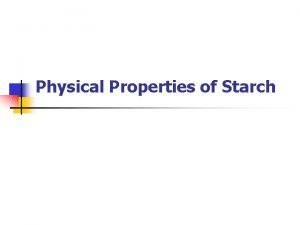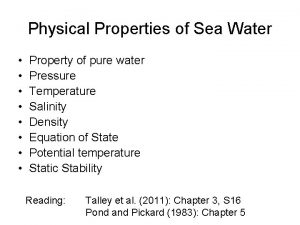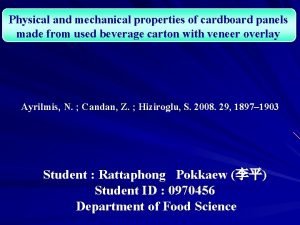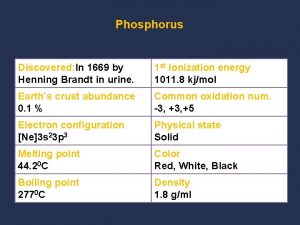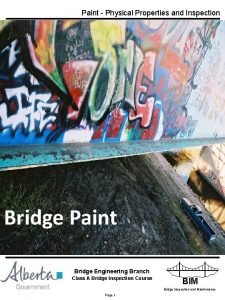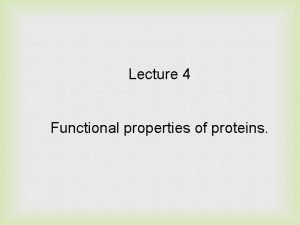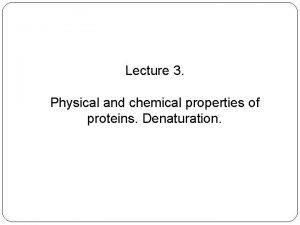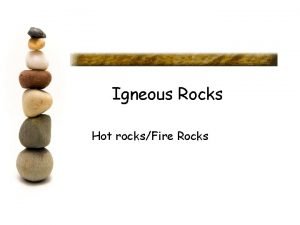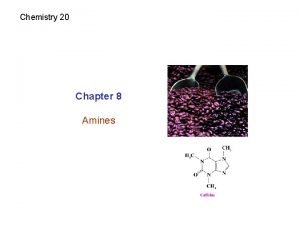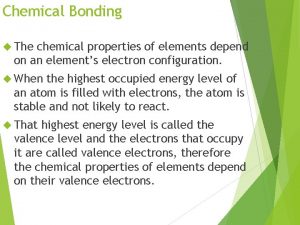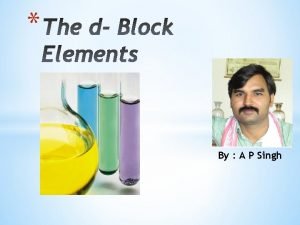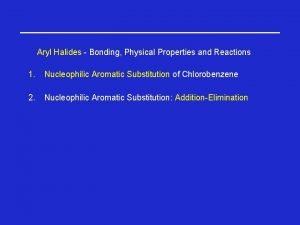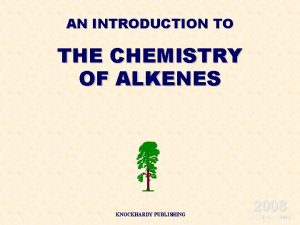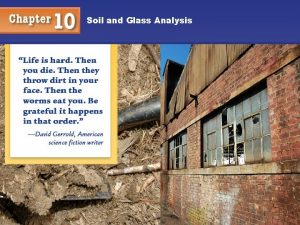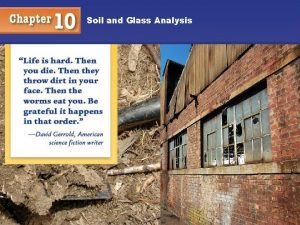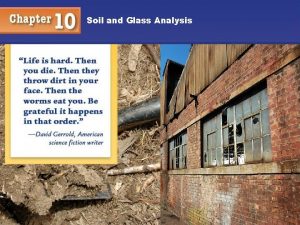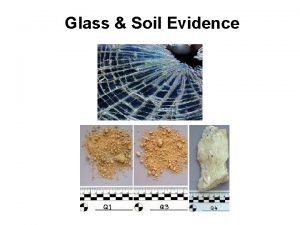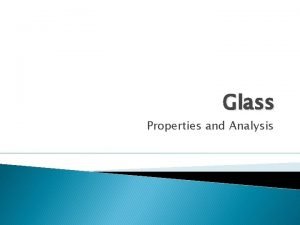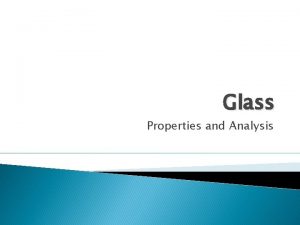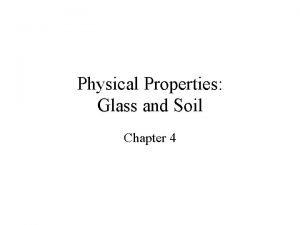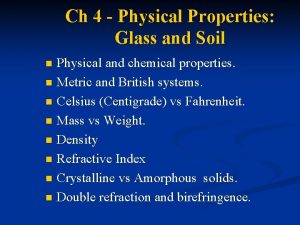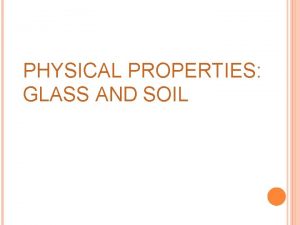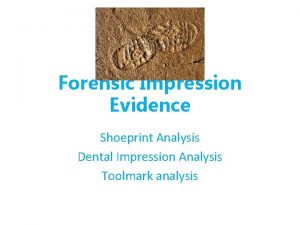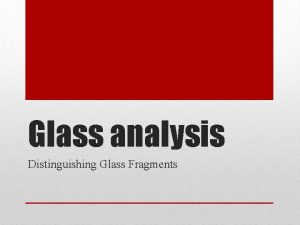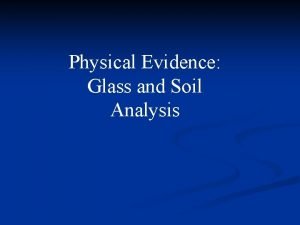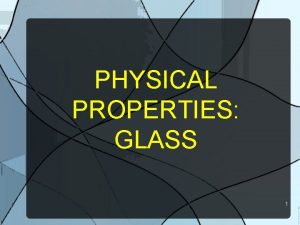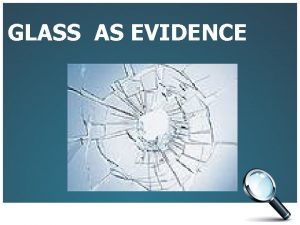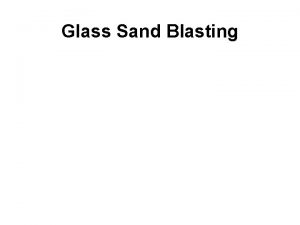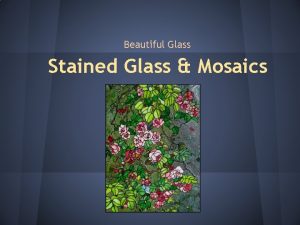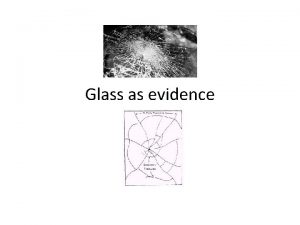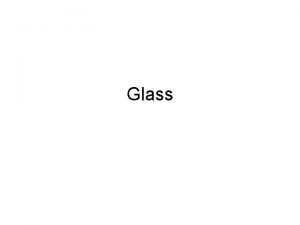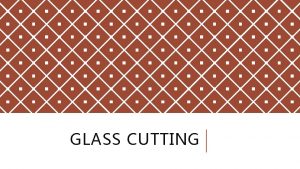Physical Properties Glass and Soil and Impression Analysis

























































- Slides: 57

Physical Properties: Glass and Soil and Impression Analysis n n n n Physical and chemical properties. Metric and British systems. Celsius (Centigrade) vs Fahrenheit. Mass vs weight. Density Refractive Index Crystalline vs amorphous solids. Double refraction and birefringes.

Dispersion of light through a prism. n Flotation and immersion methods for comparing glass specimens. n Examining glass fractures to determine the direction of impact from a projectile. n Proper collection of glass evidence. n Forensic properties of soil. n Density-gradient tube technique. n Proper collection of soil evidence. ● Impression analysis n

Significance of Physical Evidence n Identification- determination of the physical or chemical identity of a substance with as near absolute certainty as existing analytical techniques will permit. n Identification first requires the adoption of testing procedures that give characteristic results for specific standard materials. (must be repeatable) n Second, identification requires that the number and type of tests needed to identify a substance be sufficient to exclude all other substances. For example, if a conclusion is made that a white substance is heroin, then the test results must be comprehensive enough to have excluded all other drugs, or for that matter , all other substance under consideration. n The amount of tests needed to identify a substance varies, it may be just one or it may be 5 or 6. Egg white powder cocaine

n Comparison- subjects a suspected specimen and a standard/reference specimen to the same tests and examinations for the ultimate purpose of determining whether or not they have a common origin. n Individual characteristics-properties of evidence that can be attributed to a common source with an extremely high degree of certainty. n n n Cross linking hair found at a crime scene to a suspect. Cross linking paint chips on a hit and run victim to a suspected automobile. Matching ridge characteristics of two fingerprints Comparison or random striation markings on bullets or tool marks The fitting together of the irregular edges of broken objects in the manner of a jigsaw puzzle. Comparing irregular and random wear patterns in shoe or tire impressions

n Class (Identified) Characteristics-properties of evidence that can only be associated with a group and never a single source. ex. Blood groups, type of shoe, type of bullet, etc. n Product Rule- multiplying together the frequencies of independently occurring genetic markers to obtain an overall frequency of occurrence for a genetic profile. For the example - 1 in 200 people would have this same blood profile.

Crime Scene Reconstruction n The method used to support a likely sequence of events by the observation and evaluation of physical evidence, as well as statements made by those involved with the incident. n n n involves a collaborative effort that includes law enforcement personnel, medical examiners, and criminalists. Was there more than one person involved? How was the victim killed? Were there actions taken to cover up what actually took place? Physical evidence left at the crime scene plays a crucial role and is the foundation of a reconstruction.

n n n Law enforcement personnel must enhance all aspects of the crime scene search to optimize the crime scene reconstruction. Using the physical evidence available to the naked eye, he or she can hypothesize about what occurred, where it occurred, and when it occurred. The positioning of the victim at the crime scene gives medical examiners pertinent information for the investigation. n n evaluation of livor distribution- Was the body moved? Was the body clothed after death? (Livor will not develop within areas of the body that are restricted by clothing. ) laser beams can be used to plot the bullet path in trajectory analysis. Location of the shooter relative to the victim can be determined.

Sean Bell Case n Position of victim is determined.

Glass and Soil Properties of Matter n The distinguishing characteristics of a substance used in its identification & description n characteristics by which people are recognized n hair color, tone of voice, walk, shape of nose n chemical substances are recognized by how they look & behave n each chemical substance has a unique set of properties that distinguish it from all other substances

Properties of Matter n Chemical Properties n n a characteristic of a substance that describes the way the substance undergoes or resists change to form a new substance Physical Properties n a characteristic of a substance that can be observed without changing the substance into another substance

Physical Properties n Extensive Properties n depend on the amount of sample n volume, mass n Intensive Properties n do not depend on the amount of sample n melting point, density

The Metric System- a review Conversions: 1 inch = 2. 54 cm 1 meter= 39. 37 inches 1 liter= 1. 06 quarts 1 kilogram= 2. 2 pounds 1 pound = 453. 6 grams Prefixes K 1000 H Dk 100 10 B 1 D. 1 C M. 01. 001

Density n The ratio of the mass of an object to the volume occupied by that object n g/cm 3 (solids); g/m. L (liquids) (1 cm 3=1 ml in volume) d = m/V n Densities of solids & liquids are often compared to the density of water n n sink or float Varies with temperature

Temperature n n n Temperature-measure of the heat intensity of an object. Mercury thermometers are used to measure temp. because mercury expands when heated to rise up a tube and contracts when cooled to lower down the tube. Fahrenheit Scale- temperature scale using the melting point of water as 32 and the boiling point of water as 212 , with 180 degrees between. Celsius Scale- temperature scale using the melting point of water as 0 and the boiling point of water as 100 with 100 degrees between.

Weight vs Mass Weight- measure of the gravitational pull on an object. W= mg n Mass- the amount of matter in an object n

Refraction Index- Immersion Method- glass particles are immersed in a liquid medium whose refraction index is varied (by varying the temp. of the liquid) until it is equal to that of the glass particles. At the “match point” there will be the disappearance of the Becke Line (a bright halo that is observed near the border of a particle immersed in a liquid of a different refraction index. ) n Becke line disappears!!!!!

Refraction n The bending that occurs when a light wave passes at an angle from one medium to another (air to glass) n bending occurs because the velocity of the wave decreases

n Refractive Index (ND) The ratio of the velocity of light in a vacuum to the velocity of light in a given medium n ND (water) = 1. 333 n light travels 1. 333 time faster in vacuum than in water n n Velocity of light in a vacuum Velocity of light in medium An intensive property Varies with temperature and the light frequency When a transparent solid is immersed in a liquid of a similar refractive index light will not be refracted as it passes from the liquid to the solid and the eye will not be able to distinguish the liquid solid boundary. The solid seems to disappear from view.


What is Glass? n n Glass- hard, brittle amorphous substance composed of silicon oxides mixed with various metal oxides. main ingredient is sand. Heat sand metal oxides to melting and cool to rigid condition without crystallization= glass! Adding soda (Na 2 CO 3) and melting point and viscosity are lowered- easier to work with. Adding lime (Ca. O) and glass will not dissolve in water.

Structure of Glass

What is Glass? An extended, 3 D network of atoms which lacks the repeated, orderly arrangement typical of crystalline materials (AMORPHOUS) n The viscosity is such a high value that the amorphous material acts like a solid n materials which form glasses are relatively rare n n Si. O 2 (silica) is the most common example

Common types of Glass at Crime Scenes n n n soda-lime glass- window and bottle glass. Common metal oxides in this type of glass are sodium, calcium, magnesium and aluminum. Borosilicates- automobile headlights and heat resistant glass, such as Pyrex. Boron oxide is added to the oxide mix. Tempered glass- used in making some windshields, side and rear windows of automotives. Made stronger by introducing stress through rapid heating and cooling of glass surfaces Does not shatter upon impact, but breaks into fragments or “dices” into small squares with little splintering. n Laminated glass- used in making windshields of all cars made in the USA. Two sheets of ordinary glass bonded together with a plastic film.

Physical Properties n At ordinary temp. n internal structure resembles a fluid n random molecular orientation n n external structure displays the hardness & rigidity of of a solid Does not show a distinct melting point on heating gradually softens n on cooling gradually thickens n

Glass Fracture Examination Types of Fractures

Impact Fractures n Impact causes a pane of glass to bulge n n Side opposite the impact will stretch more & rupture first Radial cracks are rapidly propagated in short segments from the point of impact

Impact Fractures n If the pane is held firmly on both sides n a circular pattern of cracks (concentric) will form after the radial fractures have formed around point of impact

Forensic Examination Stress marks on radial cracks can be used to determine on which side of pane impact occurred n To perform examination n identify one or more pieces which have cracks terminating at a point of impact n fit these pieces onto one or more pieces marked “inside” or “outside” n

Three R Rule Radial cracks are at Right angles to the Rear (side opposite the impact)

Three R Rule n Exceptions n tempered glass n “dices” without forming ridges n very small windows held tightly in frame n can’t bend or bulge appreciably n windows broken by heat or explosion n no “point of impact”


Fractures Caused by Projectiles n High-velocity projectiles crater-like hole surrounded by a nearly symmetrical pattern of radial and concentric cracks n Exit hole will be larger than entry hole. n the size of the hole & diameter of crater are dependent on the size of the projectile n

Fractures Caused by Projectiles

Order of bullet holes n When 2 bullet holes are found, points of termination of fracture line are determined. A fracture always terminates at an existing line of fracture.

Mechanical Fit n In lab glass fragments are compared, linked, pieced together and analyzed to determine exactly what happened at the scene of the crime. Glass possesses its greatest value when crime scene fragments can be assembled and physically fitted together individualizing it to one source.

Glass as Forensic Evidence n Glass fragments recovered from clothing n number & distribution are important n a piece of glass embedded in a shoe has low value n many small fragments from a shirt or sweater can be highly significant

Classification Tests n n Physical and properties-At this time density and refraction index of glass are used most successfully for characterizing glass particles. This is because, the majority of glass fragments are too fragmentary or small to permit comparison Density-2. 47 -2. 54 Flotation- method for identifying the density of glass. Mixture of bromoform and bromobenzene may be used to “float a reference/standard piece of glass. (both liquid glass would have the same density. Then glass fragments found at a crime scene are added to the liquid for comparison. If they too float, then the density has been found.

Flotation Test Based on density n Glass is not perfectly homogeneous n n n test allows for small internal density variations The control glass chip (known density) immersed in mixture of bromoform & bromobenzene n composition of mixture altered until the chip remains suspended n

Flotation Test n The crime object (glass of unknown density) immersed in liquid mixture n remains suspended n liquid, control & unknown have same density n sinks n unknown is more dense than control n n different origins Accurate density measurements can be obtained with a Density Meter

Refractive index of various glass Frequency or occurrence of refractive index for samples submitted to FBI GRIMM 1 and GRIMM 2 are automated instruments used to determine the refractive index of glass particles using the immersion method. Stored in a data bank.

Double Refraction Crystalline solids have definite geometric forms! n Crystals refract a beam of light into two different light-ray components n n extraordinary ray n refracted (bent) n ordinary ray n path unchanged Causes a double image to be seen n No double refraction with isometric crystals n

Birefringence n The difference between the two indices of refraction n for calcite: 1. 486 & 1. 658 n birefringence for calcite is 0. 172 n Use in identifying crystals

Forensic Characteristics of Soil analysis is concerned with: n nature of composition of the soil- rocks, minerals, vegetation, and animal matter manufactured objects- glass, paint chips, asphault, brick fragments, and cinders whose fragments make the soil unique to a particular location. forensic soil analysis is comparative in nature- the value of soil as evidence rests with its transferability between the crime scene and the criminal. Ex. - Mud on shoe or clothes links criminal to crime scene.

Forensic Characteristics of Soil n n Geologists may help direct police to general vicinity where the crime was committed by analyzing soil found on a person thought to have committed a crime. Soil is classified by color after drying (there are nearly 1000 diff. soil colors), and microscopic determination of types of minerals and rocks, animal and plant material, and artificial material. Chemical tests of soil p. H, amounts of nitrogen, phosphorous and potassium as well as trace element amounts are also performed. Tests are performed by forensic geologists with the goal of cross linking criminal to crime scene.

Density Gradient Tubes n n Density-gradient Tubes- a glass tube filled from the bottom to the top with liquids of successively lighter densities; used to determine the density distribution of soil. Ultimately, the forensic value of soil depends on its variation at the crime scene.

n Density-gradient tube: a glass tube filled from bottom to top with liquids of successively lighter densities; used to determine the density of soil

Collection and Preservation of Soil Evidence n n n Standard/reference soils are collected within a 100 yard radius of the crime scene, as well as at the site of the crime for comparison to the questioned soil. In most cases, only the top layer of soil is removed. Only 1 -2 tablespoons is collected. Specimens are packed in individual container like plastic vials. Vials are marked and labeled with collector and site collected. Soil found on a shoe or garment- entire object must individually wrapped in paper bags with no attempt to remove the soil. Lumps of soil (such as on a car under the fender) should be collected and preserved intact in order to preserve the order to which soil adhered to the car.

Footprints and Tire Tracks Collection and preservation n n Before impressions are made, photographs need to be taken. shots from directly over with scale as well as from various angles. Shots taken to show the position of the impression in relation to the overall crime scene. Impressions on readily recoverable items, such as glass, paper or tile flooring are sent intact to crime lab.

n n Impressions made on a surface that can’t be sent to the lab need to be lifted, sometimes like lifting a fingerprint. For impressions made in light deposits of dust or dirt-lifting material needs to be large enough to lift whole impression. Place lifting material over print and use a fingerprint roller to eliminate tiny air pockets

Lifting Devices n Portable electrostatic lifting devices (ex. Pathfinder) are another method- Mylar sheet of film is placed on top of the dust mark and a roller is used to press the film against the impression. High voltage electrodes of Pathfinder are then used to create a charge difference between the Mylar film and the surface below the dust mark so that the dust is attached to the lifting film.

Casting of footprints and tire tracks- Class I dental stone, a form of gypsum is usually used to cast impressions. n Aerosol product- Snow Impression Wax is used for impressions in snow. Three light coats of wax are applied, and then the print is casted. n

Impression Identification n n comparison is only possible when an item suspected of having made the impressions recovered. Agreement with respect to size, shape, or design may permit the conclusion that a print was made a certain brand of shoe or tire. SICAR- automated shoeprint indentication system- uses multiple databases to search for known and unknown footwear files for comparison against footwear specimens linking shoeprints at a crime scene to a another crime scene or to a person who has been in custody that has that shoeprint. Type of shoe can be identified as well. Other web sites are used to link tire tracks to tire manufacturers. More significant is the existence of individual characteristics arising from wear, cuts, gouges or other damage.

Important Vocabulary: n Physical property: describes the behavior of a substance without having to alter the substance’s composition through a chemical reaction n Chemical property: describes the behavior of a substance when it reacts or combines with another substance n n Fahrenheit scale: the temperature scale using the melting point of ice as 320 and the boiling point of water as 2120, with 180 equal divisions or degrees between them.

Celsius scale: the temperature scale using the melting point of ice as 00 and the boiling point of water as 1000, with 100 equal divisions or degrees between n Weight: a property of matter that depends on the mass of a substance and the effects of gravity on that mass n Mass: a constant property of matter that reflects the amount of material present n Density: a physical property of matter that is equivalent to the mass-per-unit volume of a substance n

Refraction: the bending of a light wave as it passes from one medium to another n Refractive index: the ratio of the speed of light in a vacuum to its speed in a given substance n Crystalline solid: a solid in which the constituent atoms have a regular arrangement n Amorphous solid: a solid in which the constituent atoms or molecules are arranged in random or disordered positions. There is no regular order in amorphous solids. n

n n n Birefringence: a difference in the two indices of refraction exhibited by most crystalline materials Tempered glass: glass to which strength is added by introducing stress through the rapid heating and cooling of the glass surfaces Laminated glass- regular window glass with a piece of plastic between.

Becke line: a bright halo that is observed near the border of a particle immersed in a liquid of different refractive index n Radial fracture: a crack in a glass that extends outward like the spoke of a wheel from the point at which the glass was struck n Concentric fracture: a crack in a glass that forms a rough circle around the point of impact n Mineral: a naturally occurring crystalline solid n
 Metal heat expansion chart
Metal heat expansion chart Chemical and physical properties
Chemical and physical properties Living soil vs dead soil
Living soil vs dead soil Living soil vs dead soil
Living soil vs dead soil What is the glass escalator
What is the glass escalator If acid is splashed on your skin wash at once with
If acid is splashed on your skin wash at once with Does hot glass look like cold glass
Does hot glass look like cold glass Atterberg limits
Atterberg limits Properties of glass
Properties of glass Some properties of glass
Some properties of glass Extensive properties and intensive properties
Extensive properties and intensive properties Physical and chemical properties of sulphuric acid
Physical and chemical properties of sulphuric acid Ethan is observing chemical and physical properties
Ethan is observing chemical and physical properties Marginal percolation
Marginal percolation Physical property
Physical property The physical properties of metals include luster and
The physical properties of metals include luster and Chemical properties of helium
Chemical properties of helium Physical and chemical properties of boron
Physical and chemical properties of boron Physical and chemical properties interactive
Physical and chemical properties interactive Mrs brosseau's binder
Mrs brosseau's binder Physical properties of sodium
Physical properties of sodium Chemical properties of maltose
Chemical properties of maltose Physical and chemical properties
Physical and chemical properties Water chemical and physical properties
Water chemical and physical properties Physical and chemical properties sorting activity
Physical and chemical properties sorting activity Phospholipid fatty acid analysis soil
Phospholipid fatty acid analysis soil Apes soil lab
Apes soil lab Soil climate analysis network
Soil climate analysis network Lady in the looking glass summary
Lady in the looking glass summary Glass house & philip johnson analysis
Glass house & philip johnson analysis Concentric fracture glass
Concentric fracture glass A chip of glass ruby figures of speech
A chip of glass ruby figures of speech Glass composition analysis
Glass composition analysis The glass roses characters
The glass roses characters Glass analysis forensics
Glass analysis forensics The glass mountain donald barthelme
The glass mountain donald barthelme Putting service pricing into practice
Putting service pricing into practice Physical activity and physical fitness assessments grade 9
Physical activity and physical fitness assessments grade 9 Physical properties of amines
Physical properties of amines Bromine test for unsaturation
Bromine test for unsaturation Physical properties of a solid
Physical properties of a solid 5 starch properties
5 starch properties Salinity unit of measurement
Salinity unit of measurement Lesson outline lesson 2 - physical properties answer key
Lesson outline lesson 2 - physical properties answer key What are the properties of cardboard
What are the properties of cardboard Henning brandt
Henning brandt Physical properties of paint
Physical properties of paint Anything defintion
Anything defintion Physical properties of protein
Physical properties of protein Protein solubility
Protein solubility Pumice crystal size
Pumice crystal size Don't gamble with physical properties for simulations
Don't gamble with physical properties for simulations Physical properties of amines
Physical properties of amines Chemical properties of elements depend on
Chemical properties of elements depend on Physical properties of solutions
Physical properties of solutions Dblock elements
Dblock elements Aryl halife
Aryl halife Physical properties of alkenes
Physical properties of alkenes
